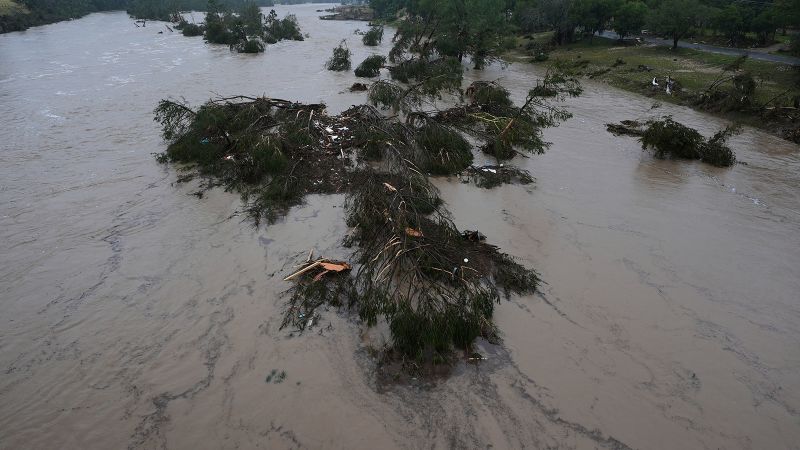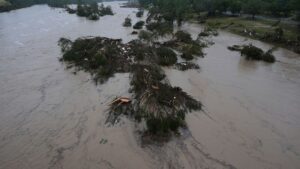
The death toll from the devastating floods in central Texas has risen to 24, with search efforts intensifying as more than 20 girls remain unaccounted for. Texas Governor Greg Abbott announced that search and rescue operations will persist throughout the night, as state and local officials strive to locate those missing in the floodwaters.
Governor Abbott emphasized the urgency of the situation, stating, “They will continue in the darkness of night. They will be taking place when the sun rises in the morning. They will be nonstop, seeking to find everybody who is unaccounted for.” First responder helicopters equipped with infrared technology are set to fly overnight, aiming to identify and rescue potential victims.
Federal Response and Local Efforts
President Donald Trump has described the flooding as “terrible” and has pledged federal support to aid recovery efforts. Speaking to reporters aboard Air Force One, Trump remarked, “It’s terrible. The floods? It’s shocking. They don’t know the answer yet as to how many people, but it looks like some young people have died.” He assured that federal assistance would be forthcoming, stating, “Oh yeah, we’ll take care of them. We’re working with the governor. It’s a terrible thing.”
The flooding has severely impacted Kerr County, where Sheriff Larry Leitha confirmed the death toll. Meanwhile, between 23 and 25 campers, primarily young girls, remain missing from Camp Mystic. Authorities are in contact with 18 camps along the Guadalupe River, but Camp Mystic is the only one with individuals still unaccounted for.
Rescue Operations and Community Impact
Efforts to rescue those affected have been extensive. According to officials, more than 200 people have been rescued across Kerr County. Major General Thomas M. Suelzer highlighted the scale of the operation, noting, “As of a few hours ago, we had rescued or evacuated 237 people and 167 of those were by helicopter.” He added that additional helicopters are en route to bolster the ongoing efforts.
Emergency personnel are also focusing on managing evacuee shelters and tracking efforts to confirm the status of those located. “We are focused on the ones that cannot help themselves right now, and that is our primary area of concern,” said Nim Kidd, chief of the Texas Division of Emergency Management.
Disaster Declaration and Historical Context
In response to the crisis, Governor Abbott has issued a disaster declaration for several of the hardest-hit counties, including Bandera, Comal, Concho, and Kerr. This declaration aims to ensure that affected areas have access to all necessary resources from the state of Texas. “We’ll put in everything we have in the entire state,” Abbott affirmed.
The flooding in Texas is reminiscent of past natural disasters that have tested the state’s resilience. Historical parallels can be drawn to the 2015 floods that also struck central Texas, resulting in significant loss of life and property. These events underscore the ongoing challenges posed by extreme weather patterns exacerbated by climate change.
Looking Ahead: Recovery and Preparedness
As rescue and recovery efforts continue, attention is turning towards long-term recovery and preparedness. Experts suggest that improving infrastructure, enhancing early warning systems, and increasing community awareness are critical steps in mitigating future flood impacts. The current crisis serves as a stark reminder of the need for comprehensive strategies to address the growing frequency and intensity of natural disasters.
With the immediate focus on locating the missing and providing aid to those affected, the broader implications of the flooding will likely prompt discussions on policy and preparedness in the weeks and months to come. The resilience of the Texas community, coupled with state and federal support, will be crucial in navigating the aftermath of this devastating event.







